What Is Infinitely Many Solutions
When working with systems of linear equations, we often encounter a single solution or no solution at all. Nonetheless, it is too possible that a linear arrangement will have infinitely many solutions.
So, when does a organisation of linear equations have infinite solutions? A system of ii linear equations in 2 variables has infinite solutions if the two lines are the aforementioned. From an algebra standpoint, we get an equation that is e'er true if we solve the system. Visually, the lines have the same slope and same y-intercept (they intersect at every point on the line).
Of class, a system of iii equations in three variables has space solutions if the planes intersect in an unabridged line (or an entire plane if all 3 equations are equivalent).
In this commodity, nosotros'll talk almost how you tin tell that a organization of linear equations has space solutions. Nosotros'll also look at some examples of linear systems with space solutions in 2 variables and in 3 variables.
Let'south brainstorm.
Systems Of Linear Equations With Infinite Solutions
A organisation of linear equations can take space solutions if the equations are equivalent. This ways that one of the equations is a multiple of the other.
It also means that every signal on the line satisfies all of the equations at the same fourth dimension.
The epitome below summarizes the 3 possible cases for the solutions for a organisation of 2 linear equations in two variables.
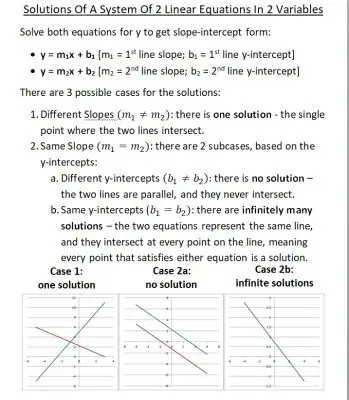
A system of equations in ii, iii, or more variables tin can have infinite solutions. We'll outset with linear equations in 2 variables with infinite solution.
When Does A Linear Arrangement Have Infinite Solutions? (System Of Linear Equations In 2 Variables)
In that location are a few ways to tell when a linear system in two variables has infinite solutions:
- Solve the system – if you solve the system and become an equation that is always true, regardless of variable value (such as ane = 1), and so at that place are infinite solutions.
- Look at the graph – if the two lines are the same (they overlap, or intersect everywhere on the line), then there are infinite solutions to the system.
- Expect at the slope and y-intercept – solve both equations for y to get slope-intercept form, y = mx + b. If the two equations take the aforementioned slope and the same y-intercept, so the lines are equivalent and at that place are infinite solutions (you tin can get a refresher on how to tell when 2 lines are parallel in my article here).
We'll look at some examples of each example, starting with solving the system.
Solving A Linear System With Space Solutions
When we attempt to solve a linear system with infinite solutions, nosotros volition go an equation that is e'er true as a result. For instance, after we simplify and combine similar terms, we will get something like 1 = i or five = 5.
Permit'south take a look at some examples to come across how this can happen.
Example one: Using Elimination To Show A Linear System Has Infinite Solutions
Let'due south say we desire to solve the post-obit system of linear equations:
- 2x + 4y = 3
- -6x – 12y = -ix
Nosotros will use elimination to solve. Allow's try to eliminate the "x" variable.
We begin past multiplying the starting time equation by iii to become:
- 3(2x + 4y) = 3(3) [multiply the first equation past three on both sides]
- 6x + 12y = nine [distribute the 3 through parentheses]
At present we add this modified equation to the second 1:
6x + 12y = 9
+
-6x – 12y = -9
___________
0x + y = 0
This implies 0 = 0, which is always true – regardless of the values of x or y nosotros choose. This ways that both equations represent the same line.
It also means that every point on that line is a solution to this linear system. And so, the organisation has infinite solutions.
The graph below shows the line resulting from both of the equations in this arrangement.
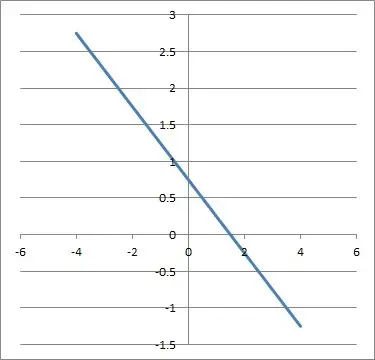
Example 2: Using Substitution To Show A Linear System Has Space Solutions
Let's say we want to solve the following arrangement of linear equations:
- y = 2x + 5
- 10x – 5y = -25
We will utilize substitution to solve. We'll substitute the y from the first equation into the y in the second equation:
- 10x – 5y = -25 [beginning with the 2nd equation]
- 10x – 5(2x + 5) = -25 [substitute y = 2x + 5 from the starting time equation]
- 10x – 10x – 25 = -25 [distribute v through parentheses]
- 0x = 0 [combine similar terms on opposite sides]
This implies 0 = 0, which is always true – regardless of the values of x or y we cull. This means that both equations stand for the same line.
It also means that every point on that line is a solution to this linear system. And then, the system has infinite solutions.
The graph below shows the line resulting from both of the equations in this system.
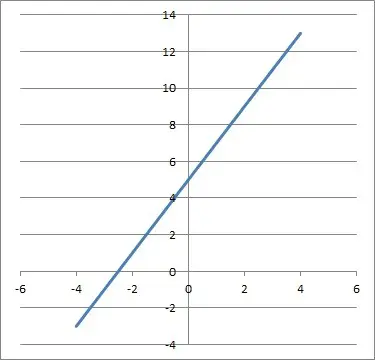
Looking At The Graph Of A Linear Organization With Infinite Solutions
When we graph a linear system with infinite solutions, we will go ii lines that overlap. That is, they intersect at every point on the line, since the two equations are equivalent and requite us the same line.
Permit'south have a await at some examples to see how this can happen.
Example 1: Graph Of Two Equivalent Equations From A Linear System With Infinite Solutions
Let'due south graph the post-obit organization of linear equations:
- y = 2x + 4
- -2y = -4x – eight
The lines accept the aforementioned slope (m = 2) and the same y-intercept (b = 4), as yous can see in the graph below:
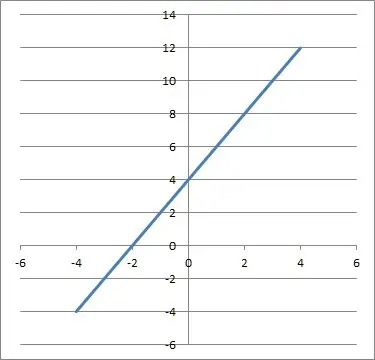
Since the slopes are the same and the y-intercepts are the aforementioned, the equations correspond the same line. So, they volition intersect at every point on the line.
This means that there are space solutions to the linear organisation we started with.
Example 2: Graph Of Two Equivalent Equations From A Linear System With Infinite Solutions
Let'south graph the post-obit organisation of linear equations:
- y = 4
- 3y = 12
The lines are horizontal, then they both have the same slope (m = 0). They too have the same y-intercept (b = 4), as you lot can see in the graph below:
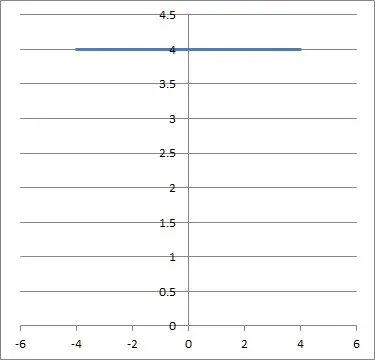
Since the slopes are the same and the y-intercepts are the aforementioned, the equations represent the same line. And then, they volition intersect at every point on the line.
This means that in that location are infinite solutions to the linear system we started with.
Looking At The Slope & Y-Intercept Of A Linear System With Infinite Solutions
When we solve a linear equation for y, we go slope-intercept class. If we do this for both equations in a linear organization, nosotros tin can compare the slope and y-intercept.
If the two slopes are the same and the y-intercepts are the same, then the 2 lines are equivalent, pregnant they intersect at all points on the line and there are infinite solutions to the linear organisation.
Let'due south take a await at some examples to run across how this tin can happen.
Case 1: Comparison Slope & Y-Intercept To Show There Are Space Solutions To A System Of Two Linear Equations
Permit's say we have the following system of linear equations:
- 4x = – 2y + viii
- 7y = -14x + 28
We volition solve for y in both equations to get slope-intercept form, y = mx + b.
Solving the first equation for y, we become:
- 4x = – 2y + viii
- 4x + 2y = 8 [add 2y to both sides]
- 2y = -4x + viii [decrease 4x from both sides]
- y = -2x + iv [divide by 2 on both sides]
Solving the second equation for y, we get:
- 7y = -14x + 28
- y = -2x + 4 [divide by 7 on both sides]
Then, the 2 equations in slope-intercept form are:
- y = -2x + 4
- y = -2x + four
Since these 2 equations have the aforementioned gradient (thou = -2) and the same y-intercept (b = iv), we know that they represent the same line.
Since the lines intersect at all points on the line, there are infinite solutions to the organization.

Case 2: Comparing Slope & Y-Intercept To Show There Are Infinite Solutions To A Organisation Of 2 Linear Equations
Let's say we have the following system of linear equations:
- 30x = 6y – 18
- 4y – 20x + 10 = 22
Nosotros will solve for y in both equations to become slope-intercept form, y = mx + b.
Solving the first equation for y, nosotros get:
- 30x = 6y – 18
- 30x + xviii = 6y [add 18 to both sides]
- 5x + 3 = y [divide by 6 on both sides]
Solving the 2nd equation for y, nosotros get:
- 4y – 20x + 10 = 22
- 4y – 20x = 22 – 10[subtract ten from both sides]
- 4y – 20x = 12[combine like terms: constants]
- 4y = 20x + 12 [add together 20x to both sides]
- y = 5x + three [divide by 4 on both sides]
And so, the 2 equations in gradient-intercept form are:
- y = 5x + 3
- y = 5x + 3
Since these ii equations accept the same slope (m = -two) and the same y-intercept (b = four), we know that they stand for the same line.
Since the lines intersect at all points on the line, there are infinite solutions to the system.
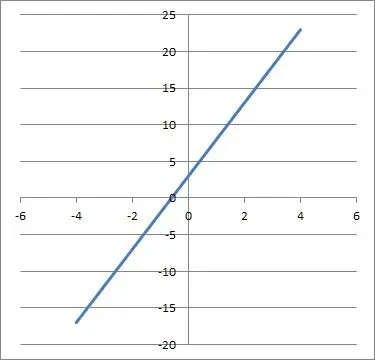
How To Create A Organization Of Linear Equations With Infinite Solutions
To create a organisation of linear equations with infinite solutions, we can utilise the following method:
- Outset, write a linear equation of the form ax + past = c. Adjacent, choose a nonzero number d. So, multiply both sides of the equation past d to become adx + bdy = cd. This second equation is equivalent to the first, and we have our arrangement.
Example: Create A System Of Linear Equations With Infinite Solutions
First, nosotros choose any values for a, b, and c that we wish. This gives usa our kickoff equation:
- 2x + 5y = ix [nosotros chose a = 2, b = v, c = 9]
Side by side, we cull a nonzero value of d: d = iv.
At present, we multiply both sides of the start equation past d = 4:
- 2x + 5y = 9 [outset equation]
- 4(2x + 5y) = 4(9) [multiply both sides by d = 4]
- 8x + 20y = 36 [distribute iv through parentheses]
At present we accept our second equation.
Our system of ii equations is:
- 2x + 5y = nine
- 8x + 20y = 36
Since the two equations are equivalent, they represent the same line on a graph. So, in that location are infinite solutions to this organization.
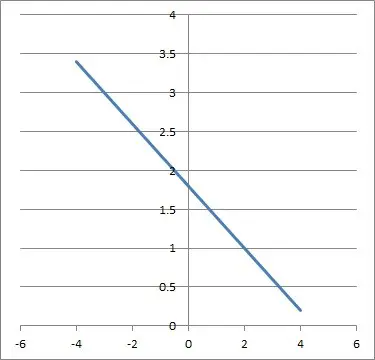
System Of Linear Equations In Iii Variables With Infinite Solutions
A system of equations in 3 variables will have infinite solutions if the planes intersect in an entire line or in an entire plane.
The latter instance occurs if all three equations are equivalent and correspond the same aeroplane.
Here is an case of the second case:
- 10 + y + z = 1
- 2x + 2y + 2z = 2
- 3x + 3y + 3z = 3
Note that the 2d equation is the commencement equation multiplied by 2 on both sides. As well note that the tertiary equation is the first equation multiplied by 3 on both sides.
Since the equations are all multiples of one another, they are equivalent. That means they all represent the aforementioned plane.
Then, their intersection is the entire airplane described by the equation ten + y + z = 1.
This means that there are infinite solutions to the above organization: every signal on the plane 10 + y + z = 1.
When Does A System Of Linear Equations Have A Solution?
A arrangement of linear equations in two variables has a solution when the two lines intersect in at to the lowest degree ane place.
- If the ii lines have the same slope and the same y-intercept, then the two equations are equivalent, and they represent the same line (so at that place are infinitely many solutions, since every point on the line is a solution).
- If the two lines take different slopes, and then they intersect at exactly 1 signal.
When Does A System Of Linear Equations Have No Solution?
A system of two linear equations in two variables has no solution when the two lines are parallel.
From an algebra standpoint, this means that we become a false equation when solving the system.
Visually, the lines never intersect on a graph, since they have the same slope but different y-intercepts.
You can larn more about this case (and some examples) in my commodity here.
Conclusion
Now you know when a system of linear equations has infinite solutions. You besides know what to wait out for in terms of the slope, y-intercept, and graph of lines in these systems.
You lot tin can learn well-nigh systems of linear equations with ane solution in my article here and systems of linear equations with no solutions in my article here.
Y'all can learn more near slope in this commodity.
You can learn virtually other equations with space solutions here.
I hope you plant this article helpful. If and so, please share it with someone who can use the data.
Don't forget to subscribe to my YouTube aqueduct & get updates on new math videos!
~Jonathon
What Is Infinitely Many Solutions,
Source: https://jdmeducational.com/systems-of-linear-equations-with-infinite-solutions-3-ways-to-tell/
Posted by: williamsthoom1977.blogspot.com


0 Response to "What Is Infinitely Many Solutions"
Post a Comment